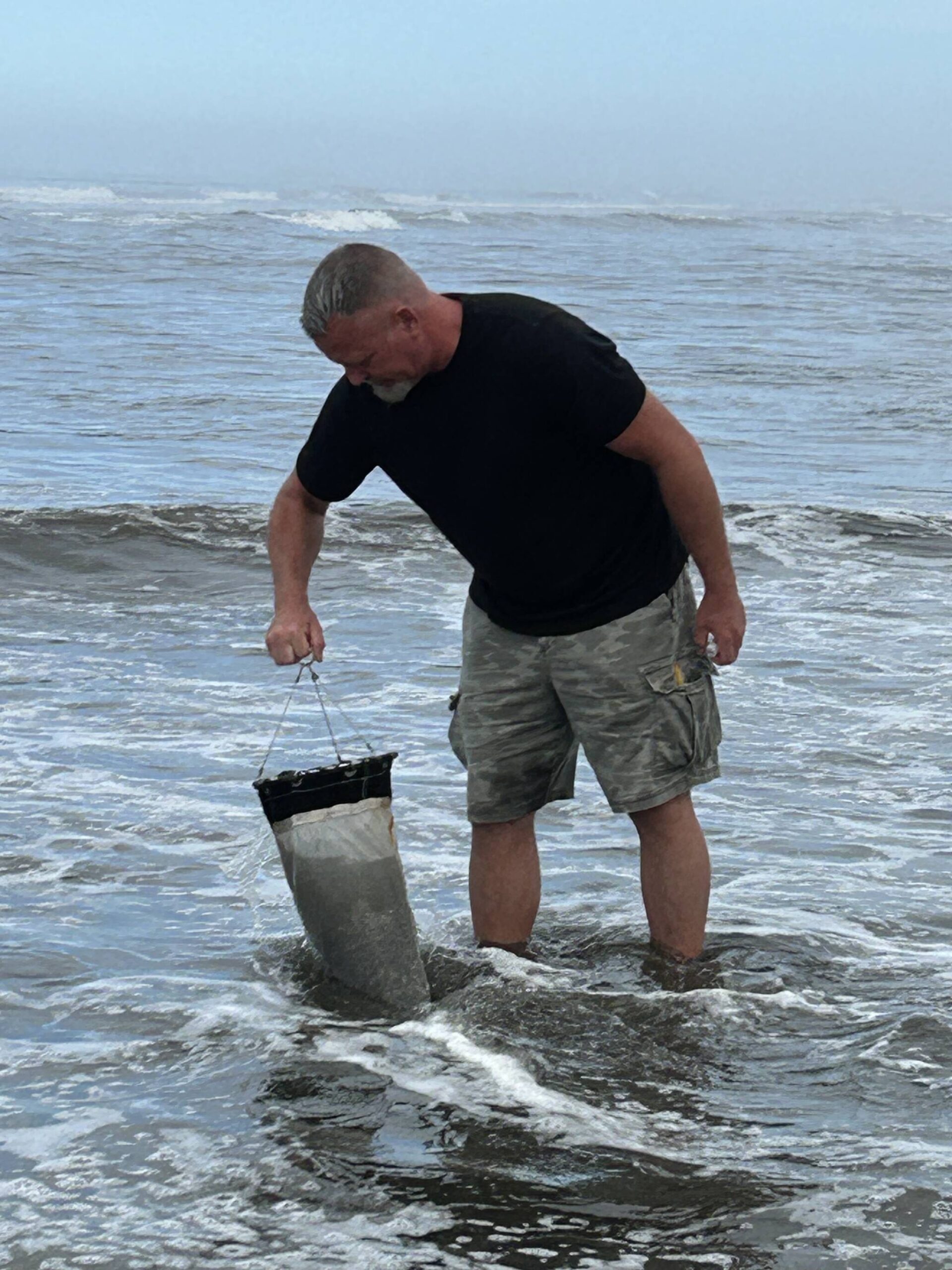Anthony Odell, a scientist with the University of Washington’s Olympic Natural Resources Center (ONRC) in Forks, joined a National Oceanic and Atmospheric Administration (NOAA) Hake cruise to sample for harmful algal blooms (HABs) offshore.
In his day job, Anthony helps coordinate the beach sampling of microscopic algae, which are abundant in seawater and are the food for shellfish and some fish. However, a very small percentage of these algae, also called phytoplankton (or “plant swimmers”) can produce toxins that are the cause of HABs, which can make shellfish dangerous for humans to eat.
These toxins can become concentrated in sardines or anchovies and kill whales, sea lions, sea otters and birds when they eat this toxic food. By sampling seawater and monitoring environmental conditions at several beaches along the Washington coast, the Olympic Region HAB (ORHAB) project (www.orhab.org), led by ONRC, provides an early warning of shellfish toxicity by noting that HABs are in the water.
Seawater and the algae that it contains are sampled using a net. Using a microscope, scientists can determine the type and abundance of HABs. Scientists with ONRC have discovered that there are offshore “birthplaces” for harmful algae, highly productive regions where HABs can originate.
One of these birthplaces is the Juan de Fuca eddy, also called “the Prairie” by the Makah Tribe. This is where numerous whales can be found and fish can be caught because the algae, which are food for fish and shellfish, are so abundant there. By sampling these offshore regions on research cruises, scientists understand the number and type of HABs that are present there.
This helps to provide an early warning of HABs before they hit the coastal beaches where they can close shellfish harvest. This early warning can help to close only selective beaches that have high toxins in shellfish, while other harvest areas remain open.



